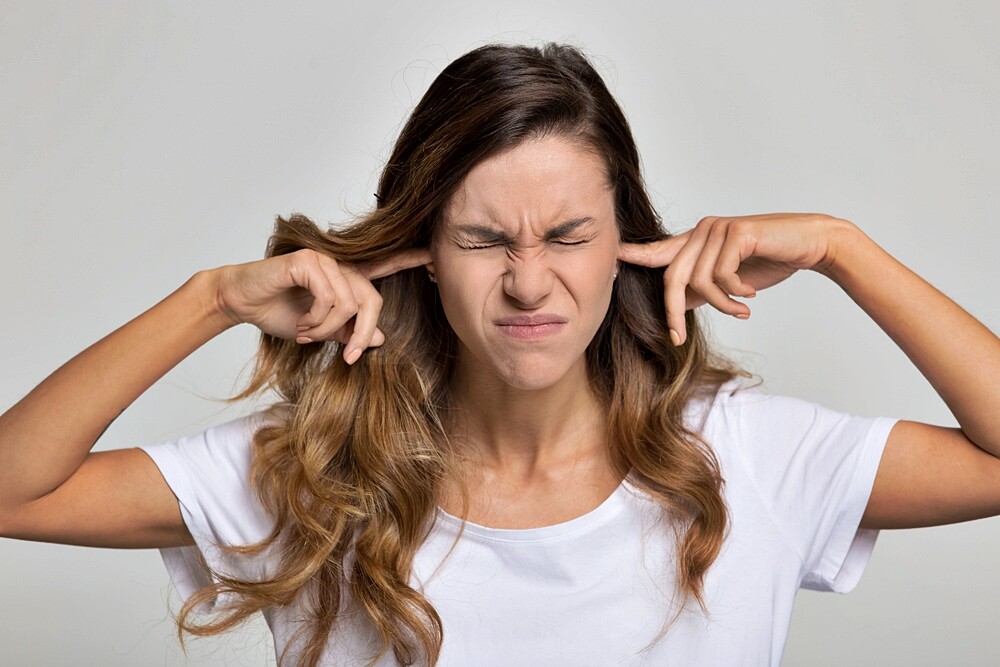Pressure in ears is rather harmless, but annoying. Here you will learn how this phenomenon can occur and how to get rid of the unpleasant pressure on your ears.
What causes pressure in ears?
The ear is an extremely sensitive organ and reacts correspondingly sensitively to changes in air pressure. But what causes the classic pressure in ears? First of all, one should look at the structure of the ear to answer this question: The elastic eardrum, which lies deep in the ear canal and seals the ear airtight, transmits sound vibrations to the organs of the middle and inner ear. If the air pressure changes (e.g. when a plane takes off), the pressure conditions inside and outside the ear are no longer the same. As a result, the eardrum bulges and presses against the inner ear – it feels as if the ear is closing.
Pressure in ears is not dangerous, but it is often perceived as unpleasant. Children are more often affected by ear pressure, but it can also occur in adults. In order to get rid of the ear pressure, pressure compensation is necessary.
What is the cause of pressure in ears?
There are various causes of pressure in ears. Among them are:
- Change in air pressure (e.g. when flying or diving)
- Infections (e.g. with colds)
- Plugging in the ear (often accompanied by deteriorating hearing performance)
- Stress – this cause can lead to sudden deafness or tinnitus
- Incipient hearing loss (e.g. due to age)
Pressure in ears as a symptom
Often the feeling of pressure in your ear is also a symptom of other diseases. These include:
- Common cold
- Otitis media (you can find out all about symptoms of otitis media here)
- Hearing loss
- Heart canal inflammation
- Drum effusion (in children, often accompanied by poorer hearing. During this process, fluid collects in a cavity in the middle ear).
How do I relieve pressure in my ears?
The ear canal, which connects the middle ear with the throat, is responsible for ventilation and pressure equalisation in the ear. When we swallow or yawn, for example, it opens and allows air to pass through. If the external pressure changes, however, the auditory tube has difficulty equalizing the pressure. In order to relieve the pressure on the ears, we therefore have to support the work of the auditory tube – this is best done depending on the cause.
Pressure compensation for colds
The swelling of the mucous membranes in colds causes pressure in ears. This should be treated as soon as possible – because once the ear is closed, viruses and bacteria can more easily cause an inflammation of the middle ear. In order to get rid of the pressure on the ears, the mucous membranes in the nose have to swell down. The best way to do this is to use a decongestant nasal spray or inhale the steam of chamomile tea.
Pressure equalization in the aircraft
Sensitive ears can be protected against pressure changes with earplugs, as these gently reduce the pressure in the eardrum. This also helps to prevent earaches after landing. Otherwise, there are various techniques to reduce the pressure on the ears:
- Valsalva manoeuvre: the mouth is closed, the nose is covered. You try to exhale.
- Tonybee manoeuvre: The mouth is closed, nose covered. Attempt to swallow several times.
- The mouth is opened wide and the jaw is moved.
- One swallows or chews (e.g. chewing gum) consciously.
Through these techniques the ear canal opens and the eardrum moves – which can be perceived as a slight crackling in the ear. This should reduce the pressure on the ears.
Constant pressure in ears: Which treatment helps?
If the ear canal is very narrow, the ventilation of the ear is disturbed, which can cause permanent ear pressure (“tube ventilation disturbance”). An appropriate diagnosis can and should be made by the ENT physician through examinations. This is because poor ventilation creates a warm and humid climate in the inner and middle ear – the perfect breeding ground for viruses and bacteria that can cause middle ear inflammation. In order to reduce the risk, the ear canal can be expanded with a small intervention as a therapy.

